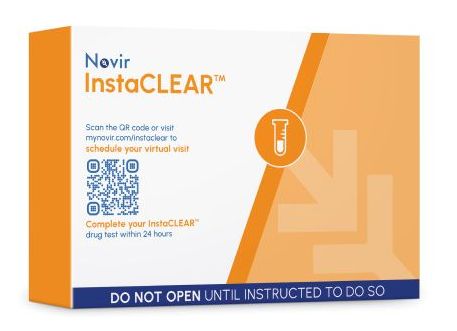Quest Diagnostics annual drug testing index (DTI) report for 2023 is released. DTI also provides valuable insights into drug use in the workforce and covers a range of illicit, legal, and prescription drugs. The report can help employers make informed decisions and changes in their drug testing programs.
In this blog post, we also cover some key findings from the DTI report.
Surge in drug test cheating cases in 2023
Substituted urine specimens saw an increase of 633% (YoY) in the general workforce (0.015% in 2022 versus 0.11% in 2023). Invalid urine specimens also increased by 45.2% (YoY) in the general workforce (0.31% in 2022 versus 0.45% in 2023).
“The increased rate of substituted and invalid specimens indicates that some American workers are going to great lengths to attempt to subvert the drug testing process,” said Suhash Harwani, Ph.D., Senior Director of Science for Workforce Health Solutions at Quest Diagnostics.
It’s alarming that the federally mandated, safety-sensitive U.S. workforce, which has stricter drug testing programs, also saw an increase in cheating cases. Substituted specimens increased by 370.6% (0.017% in 2022 versus 0.08% in 2023) and invalid urine specimens also increased by 36.7% (0.30% in 2022 versus 0.41% in 2023).
Quest Diagnosticsl Drug Testing Index : Substituted Specimens
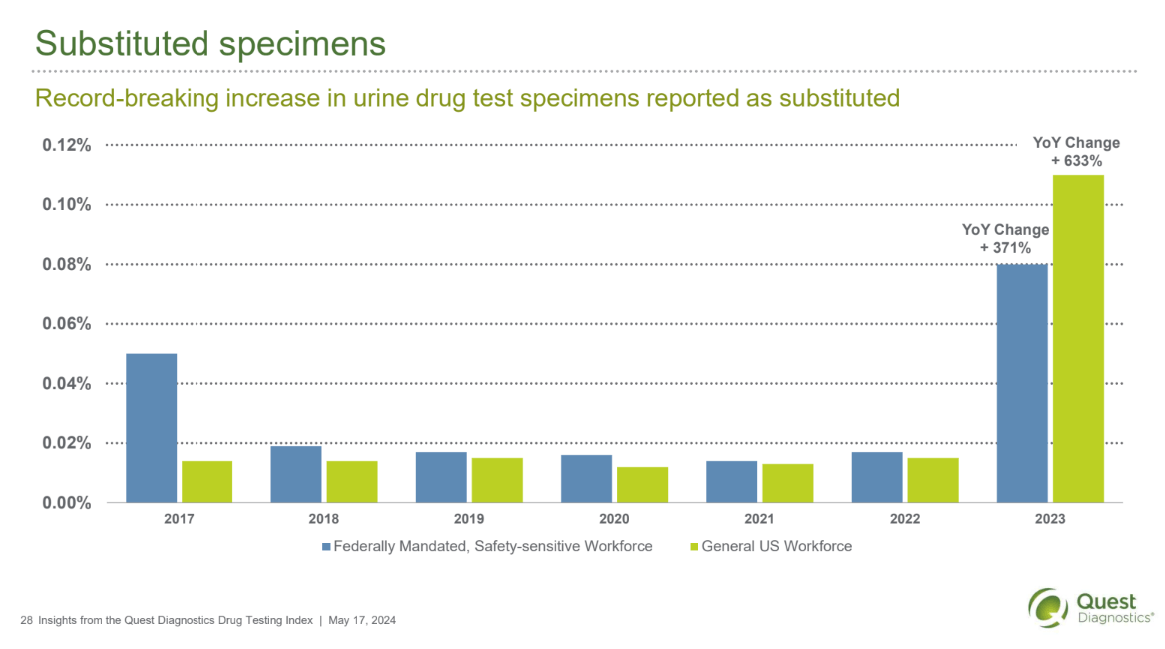
Quest Diagnosticsl Drug Testing Index : Invalid Specimens
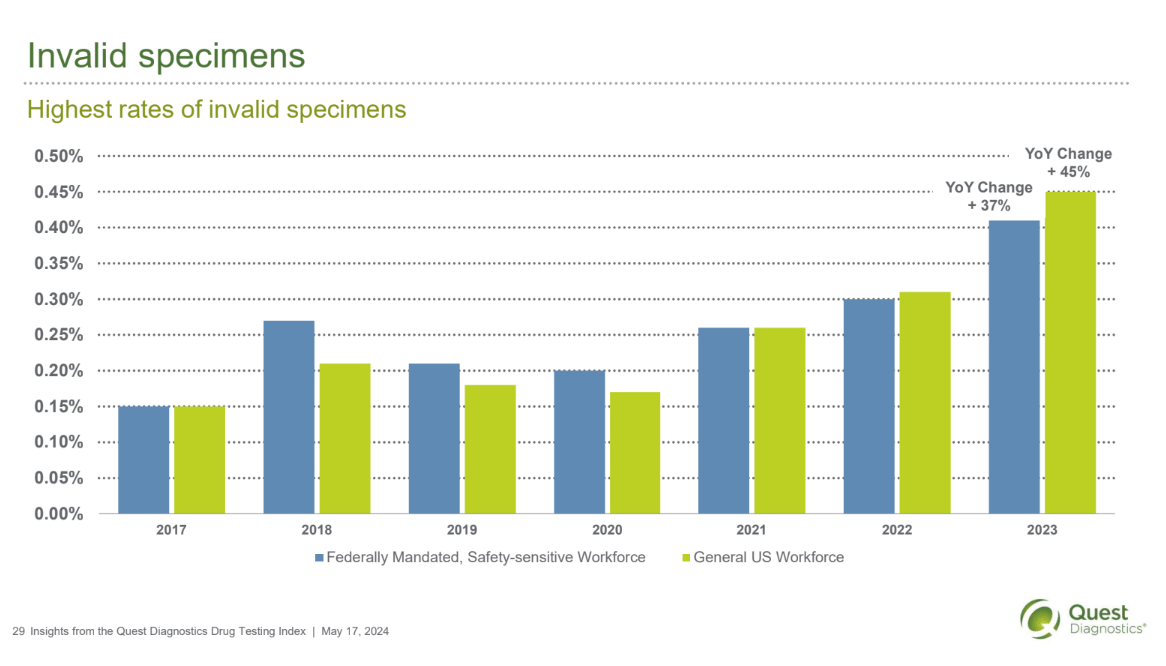
Quest Diagnostics Drug Testing reveals overall positivity is increasing, with marijuana positivity dominating in the general workforce
The overall positivity rate has reached its highest level in over two decades, marking an increase of more than 30% from the record low of 3.5% observed between 2010 and 2012. This rise aligns with a significant 114.3% increase in post-accident positivity in the general workforce from 2015 to 2023.
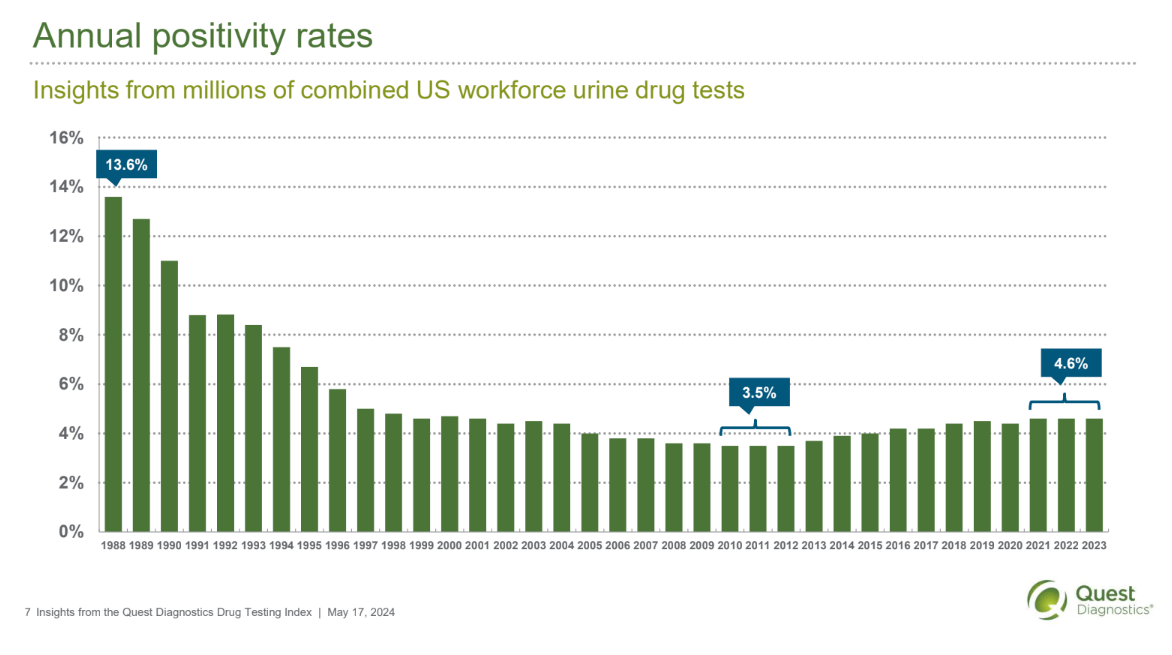
Marijuana positivity in the general U.S. workforce also increased by 4.7% (4.3% in 2022 versus 4.5% in 2023). Over the past five years, marijuana positivity has increased by 45.2%, and 2023 also reached a new peak. Comparatively, marijuana positivity in 2023 was 4.5%, which is significantly higher than 3.1% reported in 2019.
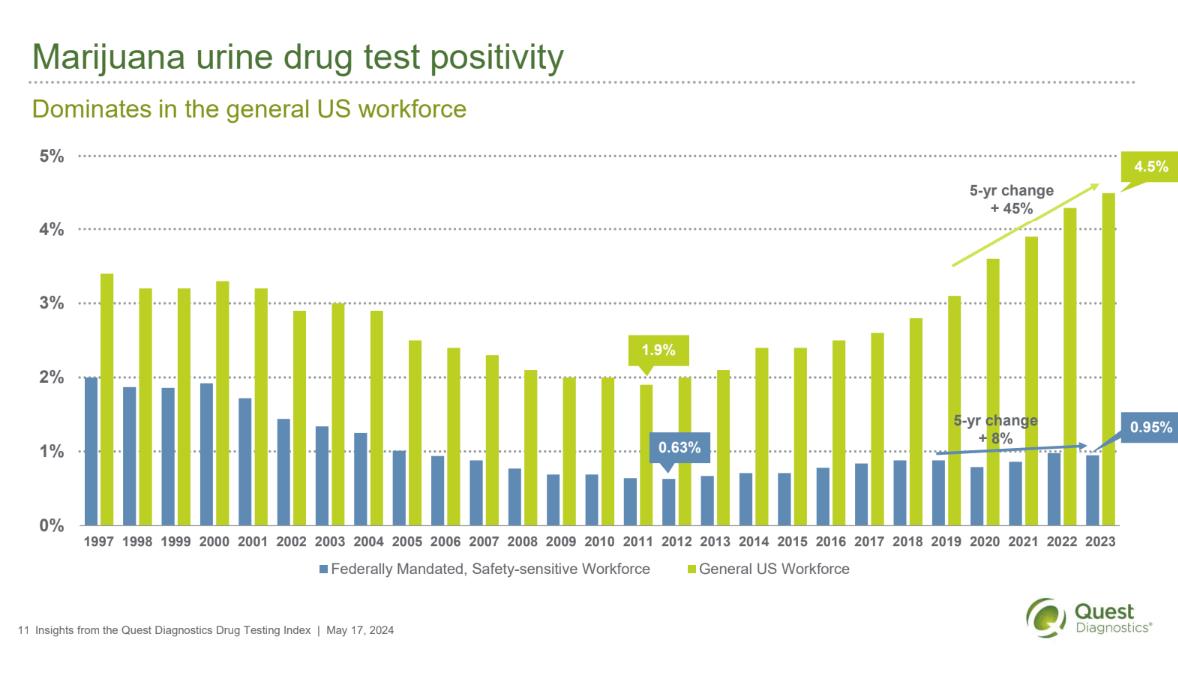
In 2023, post-accident marijuana positivity in urine drug tests for the general U.S. workforce also reached 7.5%. This record-high level reflects a consistent and steady annual increase in post-accident marijuana positivity from 2015 to 2023. Consequently, over nine years, post-accident marijuana positivity experienced a remarkable 114.3% rise, highlighting a concerning upward trend.
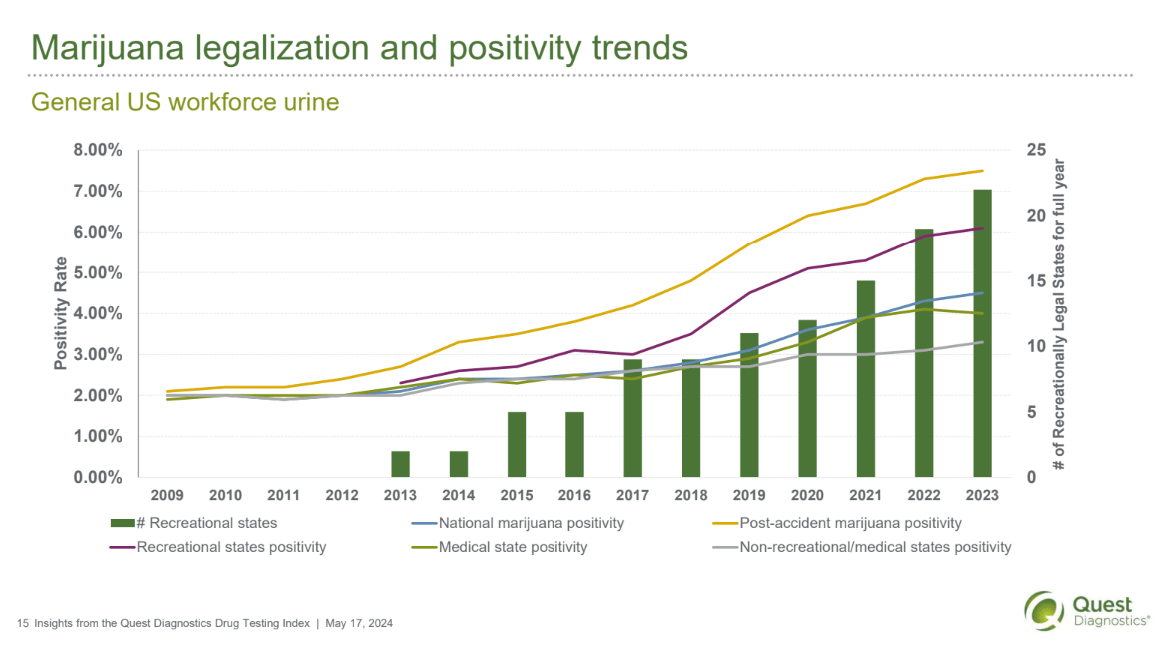
A quick look at positivity among other drug types in the general workforce
- Cocaine: Increased 9.1% (0.22% in 2022 versus 0.24% in 2023)
- Amphetamines: Remained flat (1.5% in 2022 and 2023)
- 6-AM (heroin metabolite): Decreased 16.7% (0.006% in 2022 versus 0.005% in 2023)
- Opiates (codeine/morphine): Decreased 12.5% (0.16% in 2022 versus 0.14% in 2023)
- Opiates (hydrocodone/hydromorphone): Decreased 9.4% percent (0.32% in 2022 versus 0.29% in 2023)
- Oxycodone (Oxycodone/Oxymorphone): Decreased 3.6% (0.28% in 2022 versus 0.27% in 2023)
Other key takeaways
- Fentanyl positivity in pre-employment testing of the general workforce has seen an increase of 23% (YoY)
- Post-accident drug test positivity has increased by 114.3% between 2015 and 2023 in the general workforce
Random drug testing program continues to be a strong deterrent
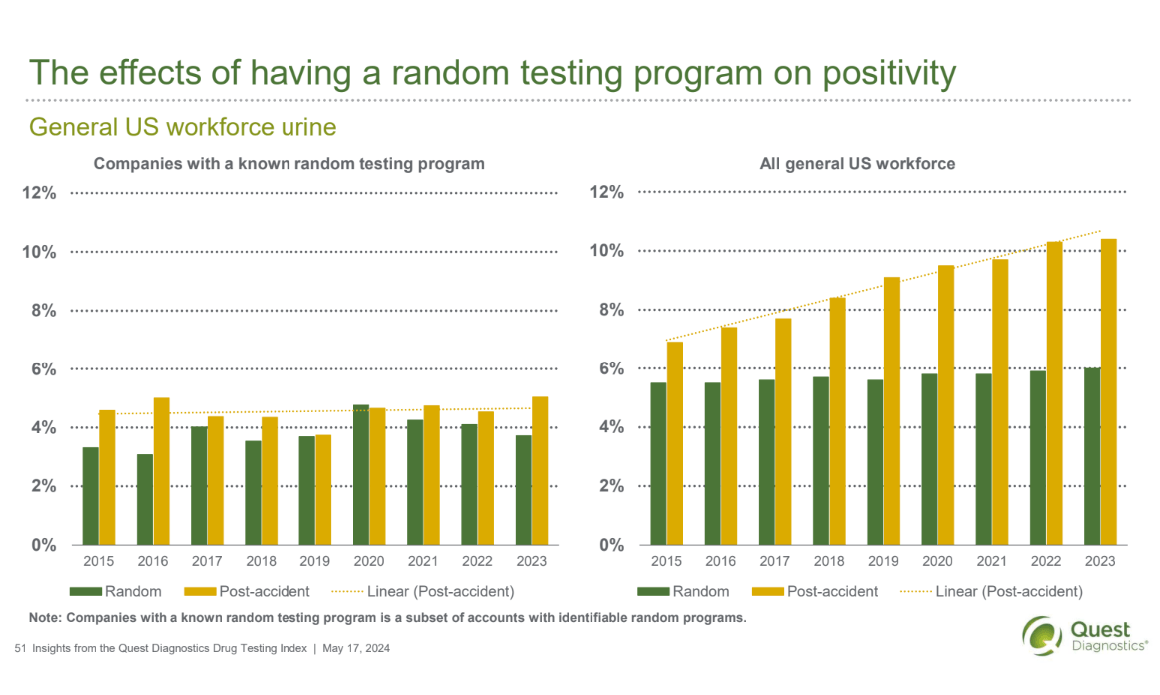
Summary
Employers need to have a strong drug testing program in place to dissuade drug use and promote a safe working environment for all employees. With the increase in marijuana positivity and its legalization in some states, employers need to be vigilant and adopt drug-testing strategies to protect workplace productivity.
InOut Labs can help employers execute a drug testing program with high efficacy. Contact us to know more.


